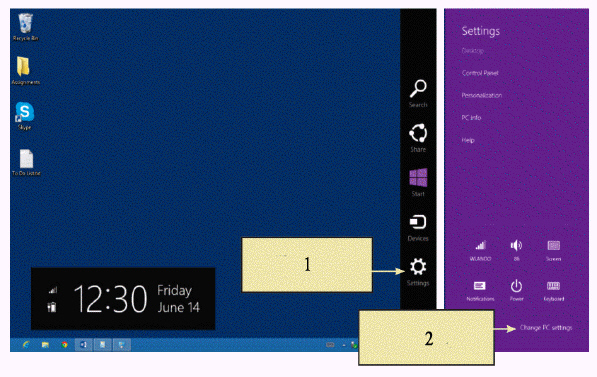Arguing with a customer is an effective way to help solve computer problems
Indicate whether the statement is true or false
False - Arguing is counterproductive and should be avoided.
You might also like to view...
 In the accompanying figure, item 2 is pointing to a ____.
In the accompanying figure, item 2 is pointing to a ____.
A. search box B. recently used programs C. personal library D. settings option
At what stage do operators and end-users become actively involved in testing?
A) link testing with test data B) full systems testing with test data C) program testing with test data D) full systems testing with live data
Consequently, "Hey" would be transmitted as "Ro$." Write a program Java that decrypts the intercepted message. You only know that the key used is a number between 1 and 100. Your program should try to decode the message using all possible keys between 1 and 100. When you try the valid key, the message will make sense. For all other keys, the message will appear as gibberish. Since there are only 100 keys this would obviously be a pretty crummy encryption system. This Programming Project will require you to explore a bit on your own how to convert from a char to a number, process the number, then convert it back to a char. See Chapter 2 for String methods. You will want to use charAt(). Important: Note that the secret code has a \ so you will need to escape encode it by using \\ if y
11. Your country is at war and your enemies are using a secret code to communicate with each other. You have managed to intercept a message that reads as follows: ``` :mmZ\dxZmx]Zpgy ``` The message is obviously encrypted using the enemy's secret code. You have just learned that their encryption method is based upon the ASCII code (see Appendix 7). Individual characters in a string are encoded using this system. For example, the character ‘A’ is encoded using the number 65 and ‘B’ is encoded using the number 66. Your enemy's secret code takes each letter of the message and encrypts it as follows: ``` if (OriginalChar + Key > 126) then EncryptedChar = 32 + ((OriginalChar + Key) - 127) else EncryptedChar = (OriginalChar + Key) ``` For example, if the enemy uses Key = 10 then the message "Hey" would initially be represented as: Character ASCII code H 72 e 101 y 121 And "Hey" would be encrypted as: Encrypted H = (72 + 10) = 82 = R in ASCII Encrypted e = (101 + 10) = 111 = o in ASCII Encrypted y = 32 + ((121 + 10) - 127) = 36 = $ in ASCII This program requires some knowledge of how to map from ASCII to integers, perform arithmetic, and map back to ASCII.
In a microkernel architecture, the kernel typically includes only a small number of services, such as ________; most other services, such as ________, execute outside of the kernel with a lower privilege level.
a) interprocess communication, low-level memory management b) networking, process management c) low-level memory management, file system management d) device management, networking